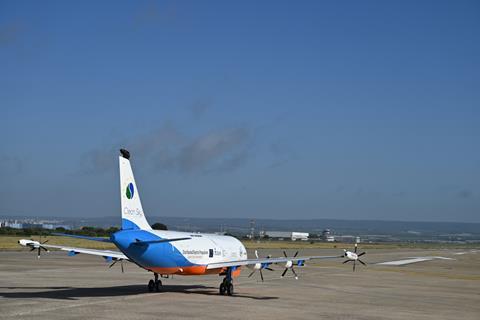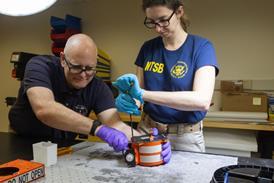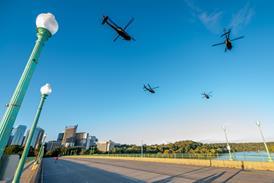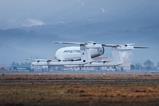Dutch researchers have completed the first flight of a new scaled demonstrator designed to evaluate the potential for future passenger aircraft using a distributed electrical propulsion (DEP) architecture.
Taking place at Taranto-Grottaglie airport in southern Italy, the 2 May sortie saw the demonstrator perform a flight of around 10min, including an approach just over the runway, before landing successfully.

“Subsequent flights will aim to qualify the aircraft for measurement flights, during which dynamic manoeuvres will be executed,” says the project lead, Royal NLR, the Netherlands Aerospace Centre.
Future flights will analyse the DEP architecture’s performance, including analysis of different control algorithms and the potential to control the aircraft through differential thrust on the propulsors.
With a 4m (13ft) wingspan and a take-off mass of 167kg (368lb), the demonstrator is equipped with six electric motors – a pair inboard on each wing and one on either wing-tip – and should be able to cruise at 100kt (185km/h).
Such a configuration should deliver a 20% reduction in energy consumption for a full-scale aircraft, believes the Royal NLR.
Part funded by the EU’s Clean Sky 2 programme, the project also involves Airbus, the French and Italian aerospace research agencies ONERA and CIRA, and TU Delft and Orange Aerospace.
It builds on windtunnel and flight tests in 2022 of a 1:8.5-scale flight demonstrator powered by a pair of jet engines. Designed to validate the overall methodology, data collected by the flight-test instrumentation was compared against results from a full-scale aircraft.
That aircraft was subsequently converted into a DEP testbed – gaining a battery pack and propellers – but was destroyed after it caught fire in May last year during ground tests at Royal NLR’s facility in Amsterdam.
A redesign of the platform resulted in the latest iteration. “Despite the setback, the project partners remained resolute and viewed the incident as a valuable learning experience,” says Royal NLR.































